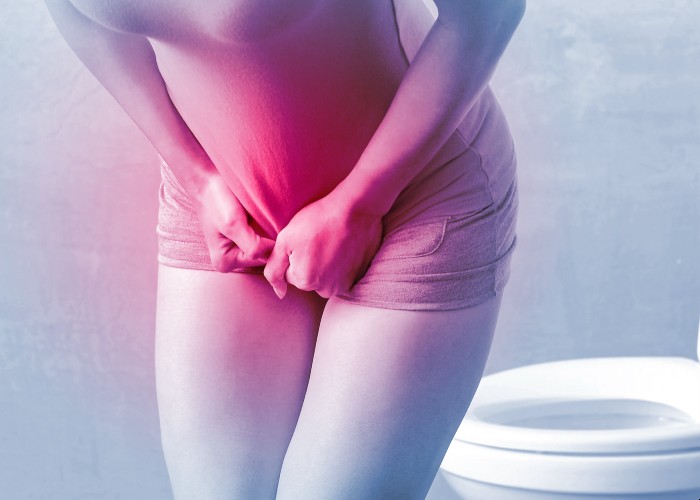Lifestyle advice and bladder weakness
In Clinical
Follow this topic
Bookmark
Record learning outcomes

Supporting patients with stress incontinence needs a discreet and informed approach that focuses on individual needs, says Kathy Oxtoby…
Incontinence can affect anyone at any age, yet despite its prevalence many people keep their condition a secret because they are too embarrassed to seek support.
Lila Thakerar, superintendent pharmacist at Shaftesbury Pharmacy, Harrow, says pharmacists play a vital role in supporting these patients “as we are their first port of call, we keep a range of incontinence products, and are able to make product recommendations”.
The NHS estimates that between three million and six million people in the UK may have some form of urinary incontinence1. Stress incontinence is the most common type experienced by women, especially when they are older. As many as one in four women have some degree of stress incontinence2, however male stress incontinence can develop too, and may occur after prostate surgery.
Stress incontinence occurs when the pelvic floor muscles are weakened, causing urine to leak out if there is pressure put on the bladder, for example, through coughing sneezing, laughing, or exercise.
A number of factors can contribute to this condition, including smoking, chronic coughing, obesity, pregnancy and childbirth, menopause, pelvic surgery, and neurological conditions that affect the brain and spinal cord, such as Parkinson’s disease or multiple sclerosis.
Managing stress incontinence
To manage the symptoms in the right way, pharmacy customers should be advised to first speak to their GP to confirm that they have stress incontinence. GPs can prescribe medication to alleviate symptoms of other conditions such as irritable bladder or bladder obstruction that can cause increased urinary urgency and frequency.
Duloxetine has been found to help with stress incontinence and is usually advised in women who do not want to undergo surgery, or in women who have health problems that may mean that surgery is unsuitable.2
If medication doesn’t help, doctors can refer patients to a continence adviser, a physiotherapist for pelvic muscle strengthening and bladder training, or to a specialist in urology or gynaecology.
For many people with stress incontinence, pharmacists can advise that self-help and lifestyle changes are enough to relieve symptoms. Pelvic floor exercises can be done at home and are effective at reducing leaks, but it is important that they are done properly, the NHS advises3 (see resources). Patients may have to do pelvic floor exercises for up to three months before they see any benefit.
NICE recommends giving lifestyle advice to help patients manage their condition including reducing caffeine intake - this may improve symptoms of urgency and frequency but not incontinence - and to avoid drinking either an excessive or reduced amount of fluid each day.4 Lifestyle advice can also include cutting down on alcohol, to help incontinence symptoms. Better choices include water and diluted drinks.
Pharmacists should warn patients who smoke that they are putting themselves at risk of stress incontinence, because coughing puts strain on pelvic floor muscles, and encourage them to quit.
Being overweight can weaken the pelvic floor muscles and cause incontinence because of the pressure of fatty tissue on the bladder. Patients can be advised that symptoms may improve, and could go away completely, if they lose any excess weight.3
Patients should also avoid spicy and acidic foods, such as curries and citrus fruits, as they can irritate the bladder and make leaks and other incontinence symptoms worse.
Making a product choice
Incontinence pads and other products and devices can make life easier for patients waiting for a diagnosis or for a treatment to work. However, NICE advises that “absorbent containment products, hand-held urinals, and toileting aids should not be used as treatment for urinary incontinence”.4
They should be used to “cope with urinary leakage whilst awaiting assessment and treatment”, and to “contain leakage whilst awaiting response to ongoing treatment”.4 They may be considered for long-term management but “only after treatment options have been explored”, NICE says.
A wide range of products and devices are available for stress incontinence, including pads and pants, bed and chair protection, skincare and hygiene products, and specially adapted clothing and swimwear. People with mild to moderate stress incontinence can buy thin, discreet pads or pull-up pants.
Stress incontinence can also cause physical side effects including skin irritation or rashes due to increased contact between skin and urine. As a result it becomes important to keep skin dry, clean, properly moisturised and protected. TENA has developed a range of skincare products, including cleansing wipes, cloths and creams designed to help prevent skin issues and maintain skin health.
Ms Thakerar says there’s an “amazing range” of products on offer to suit individual needs, and that pharmacists can recommend which products are appropriate. Advice on products, and on stress incontinence issues generally, should be given discreetly in a private area of the pharmacy, she says.
Pharmacies should display incontinence products in a prominent position, such as by the pharmacy entrance so that customers can find them easily, rather than be embarrassed by having to ask for them at the counter, she suggests.
For customers to have effective support and advice, training is crucial, and a range of training materials is available from incontinence products companies. As Ms Thakerar advises: “Make sure all your staff are aware of the range of products and are trained to recommend the appropriate product to patients – whatever their age and level of incontinence.”
Useful resources
NHS (2020) What are pelvic floor exercises? www.nhs.uk/common-health-questions/womens-health/what-are-pelvic-floor-exercises/
(Accessed 21 July 2021)
References
[1] NHS Inform (2021) NHS Inform – Urinary Incontinence. https://www.nhsinform.scot/illnesses-and-conditions/kidneys-bladder-and-prostate/urinary-incontinence
[Accessed 21 July 2021]
[2] Tidy C (2021) Stress Incontinence. Patient. https://patient.info/womens-health/lower-urinary-tract-symptoms-in-women-luts/stress-incontinence
[Accessed 21 July 2021]
[3] NHS (2019) Urinary Incontinence. https://www.nhs.uk/conditions/urinary-incontinence
[Accessed 21 July 2021]
[4] NICE (2019) Scenario: Management of a woman with predominantly stress incontinence
https://cks.nice.org.uk/topics/incontinence-urinary-in-women/management/managing-stress-incontinence/
[Accessed 21 July 2021]
